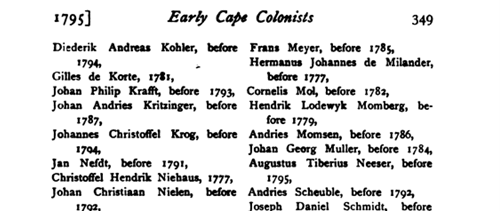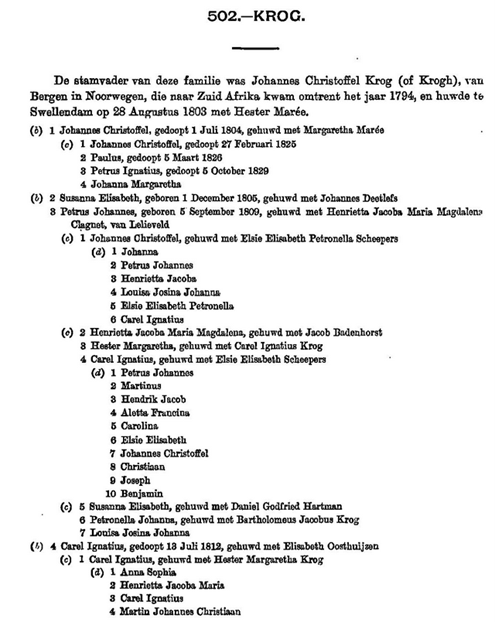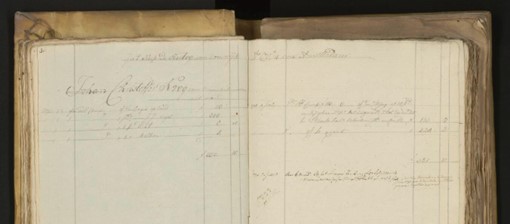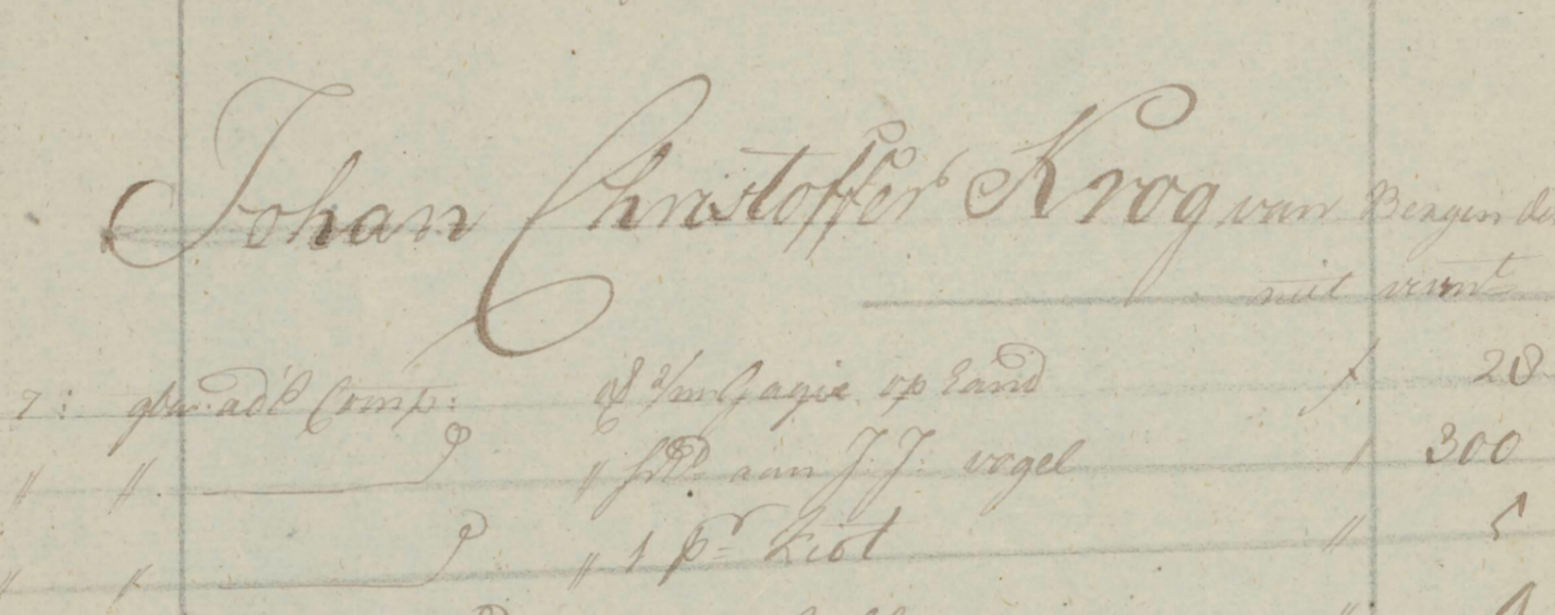Johannes Christoffel Krog South Africa 1795
Arrival at the Cape
Johan Christoffel Krog is recorded as one of the “Early Cape Colonists” or “Oude Kaapsche Familien[1]”.
History of Africa south of the Zambesi from the settlement of the Portuguese at Sofala in September 1505 to the conquest of the Cape Colony by the British in September 1795, Author:George McCall Theal, Print Book, English, [1922], Edition:3d ed., carefully rev. and enl View all formats and editions, Publisher:G. Allen & Unwin Ltd, London, [1922], p. 349
Geslacht-register der oude Kaapsche Familien Part 2 – https://archive.org/details/OudeKaapscheFamilienPart2/page/n175/mode/2up
Johannes Christoffel Krog was one of the 655 000 employees of the Dutch East India Company (“VOC”)[2]. His employment with the VOC commenced on the 7th of November 1793[2] when he joined the ship Hertog van Brunswijk, as third master, responsible for medical care on the ship. The Hertog van Brunswijk, skippered by Jan Olhof, was built in 1792 in Amsterdam[3].
On the 7th of November 1793, the Hertog van Brunswijk sailed from Texel[4], an island in North Holland, Netherlands, bound for Batavia – the capital of the Dutch East Indies, corresponds to present-day Jakarta, Indonesia[5]. It sailed with 196 seafarers, 14 soldiers and 44 passengers onboard[6], arriving at the Dutch Cape Colony, 121 days later on the 8th of March 1794[7].
The Hertog van Brunswijk departed the Dutch Cape Colony on the 17th of April 1794, 40 days after arrival at the Dutch Cape Colony arriving at Batavia on the 9th of July 1794[9].
Johannes Christoffel Krog departed Batavia on the 23rd of January 1795, 198 days after arrival in Batavia, on a different ship, the Makassar.
The Makassar was built in 1787 for the Chamber of Enkhuizen on a wharf in Enkhuizen. It was in use by the VOC from 1787. It had a length of 150 feet and payload of 575 load (1150 tons).[10]
The Makassar arrived at the Dutch Cape Colony on the 16th of May 1795, 113 days after departure from Batavia[11]. Johannes Christoffel Krog departed the Dutch Cape Colony onboard the Makassar on the 7th of June 1795 but did not make it back to Europe.
[1] Geslacht-register der oude Kaapsche Familien Part 2 – https://archive.org/details/OudeKaapscheFamilienPart2/page/n175/mode/2up ![]()
[2] Nationaal Archief (Netherlands), Dutch East India Company, archive 1.04.02, inventory number 6839, folio 38 – https://www.openarch.nl/ghn:6df51ba4-3432-41e4-a2fe-8010b1406133 ![]()
[3] Ibid.
[4] de VOCsite – https://www.vocsite.nl/schepen/detail.php?id=10179 (Referenced by the Genealogical data of the Dutch Archives) ![]()
[5] Ibid.
[6] https://en.wikipedia.org/wiki/Batavia,_Dutch_East_Indies ![]()
[7] Huygens Institute – https://resources.huygens.knaw.nl/das/detailVoyage/95793 ![]()
[8] Nationaal Archief (Netherlands), Dutch East India Company, archive 1.04.02, inventory number 6839, folio 38 – https://www.openarch.nl/ghn:6df51ba4-3432-41e4-a2fe-8010b1406133 ![]()
[9] Ibid.
[10] https://www.vocsite.nl/schepen/detail.php?id=10646 ![]()
[11] Nationaal Archief (Netherlands), Dutch East India Company, archive 1.04.02, inventory number 6839, folio 38 – https://www.openarch.nl/ghn:6df51ba4-3432-41e4-a2fe-8010b1406133 ![]()




